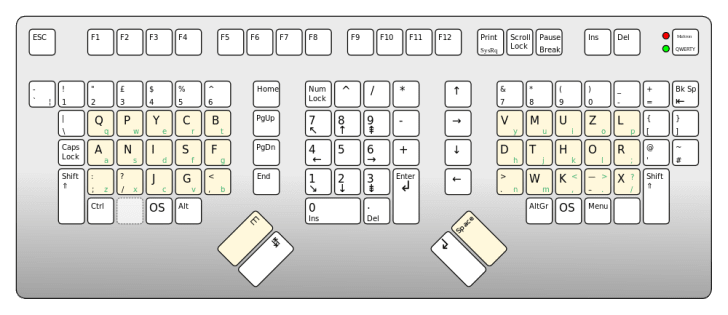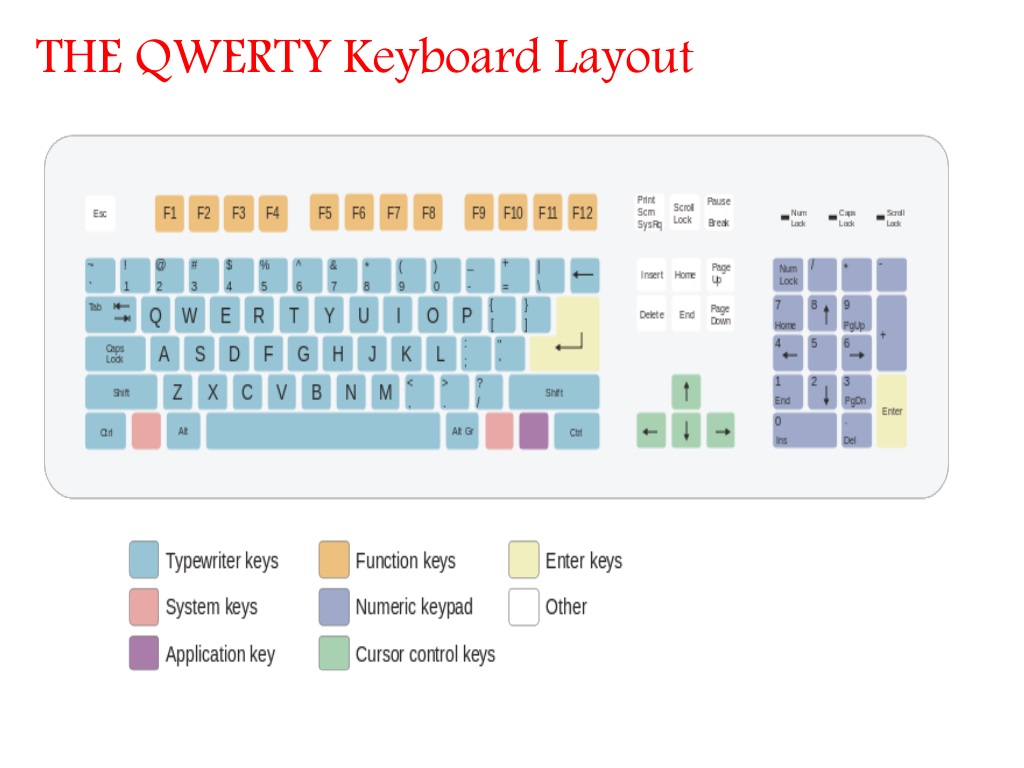
This is false typewriters were, in fact, designed to always stay in alphabetical order since their keys were metal bars fixed onto a rotating roller.Įarly computers also used metal bars for their typing keyboards and these were designed to be mechanically ordered like typewriters. One of the most common misconceptions about why the keys on a keyboard are not in alphabetical order is because typewriters used to be mechanically arranged in this way. While it may initially seem that many of the letters are out of place, it is important to note that this setup enables efficient typing that would not be possible with an alphabetical arrangement.

Many people have wondered why keys on computer keyboards are not in alphabetical order.

As a result, it has become an industry standard for touch-typing due to its comfortable design aspects and its ability to reduce mistyping from being too fast on the keys. Lastly, QWERTY increases efficiency when crafting sentences commonly used words can easily be typed without having to move one’s hands far away from the home row. Furthermore, it allows for a much more comfortable typing experience since you can reach more keys without making extreme movements with your hands and fingers, allowing for less fatigue and strain when typing for extended periods of time. Firstly, this arrangement is easier to learn since it keeps related letters grouped together in blocks on the keyboard, such as numbers and punctuation marks. There are several benefits that can be attributed to this design choice. It was designed in the late nineteenth century and standardized on typewriter keyboards made by Christopher Sholes, who rearranged letters to slow typing speeds and prevent jamming of the mechanical keys. The traditional QWERTY keyboard layout is the most commonly used layout around the world.

Over time, this particular design became a de facto standard, becoming so popular that all keyboards fall into this same general pattern, even though they may use different language layouts or have some additional keys added.īecause of its widespread use and familiarity through common usage, it is here to stay and other keyboard layouts have never been able to gain much ground against it - not even those designed specifically around reducing fatigue or improving typing speeds. He determined that if all letters were placed in alphabetical order, it could lead to mechanical problems due to the fast pace at which users typed. It was designed in 1868 by Christopher Sholes, who is responsible for popularizing the typewriter in America. The significance of the name comes from the first six letters on the top row of the keyboard, which spell out “QWERTY.” The QWERTY keyboard layout is based on the layout for early typewriters and has become a standard for typing regardless of what type of computer or device you use. Conclusion History of the QWERTY Keyboard.
ALTERNATIVES TO QWERTY KEYBOARD LAYOUT HOW TO
The keys on a computer keyboard still follow this same design today, so if you learn how to type, it will allow you to work faster with computers too! We’ll take a closer look at why keyboards are designed this way and explore some alternatives that have been developed over time. The purpose of the QWERTY layout was to separate common letter pairs from each other so that typewriters could be used more effectively and efficiently. It’s a common misconception that this layout was designed to slow down typists, interestingly, this isn’t true. Many standard keyboards today feature the QWERTY layout, with all the alphabetic keys placed in seemingly chaotic locations.

Have you ever stopped and wondered: why are the keys on a keyboard not in alphabetical order? When you approach the keyboard for the first time, the arrangement of letters and numbers may seem like a mysterious code. In this blog post, we’ll dive deep into this confounding conundrum and figure out why our keyboards are not organized in an alphabetical fashion. It’s a mystery as old as type-writers themselves: why isn’t the keyboard in alphabetical order? While it may have made sense back when the key to success was a well-oiled typewriter, it no longer makes sense in an age where tapping away on a keyboard is the fastest way to communicate.


 0 kommentar(er)
0 kommentar(er)
